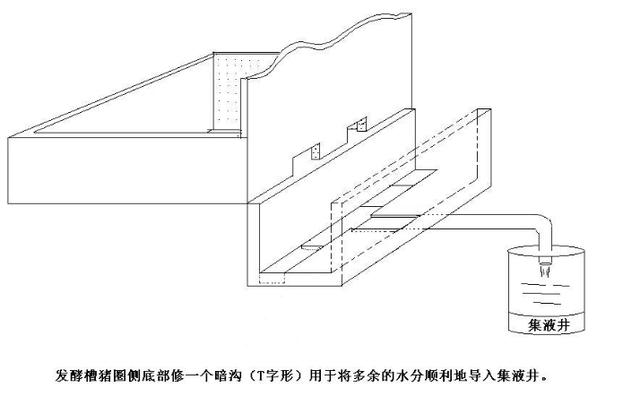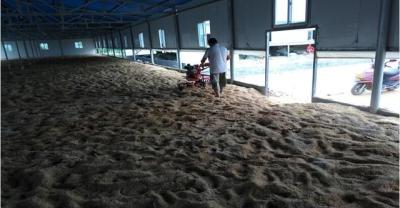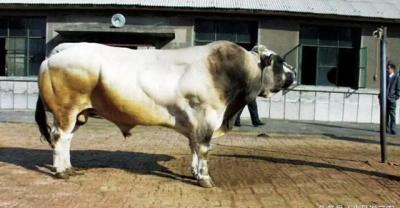Deep analysis of fermentation bed culture technology
Interpretation of National Culture Policy
In the southeast coastal areas, traditional farms have been forcibly shut down for rectification due to serious pollution. Next, the state will gradually rectify the nationwide farms, and the farms with serious pollution and huge energy consumption will be closed for rectification. Fermentation bed culture will become the first and government-supported culture mode of ecological culture.
Detailed interpretation of fermentation bed Culture Model
The culture mode of fermentation bed can be divided into contact fermentation bed and partition fermentation bed, in which contact fermentation bed can be subdivided into aboveground contact fermentation bed and underground contact fermentation bed. Partition fermentation bed can be subdivided into vertical partition fermentation bed and separation partition fermentation bed.
Aboveground contact fermentation bed
The construction mode of the fermentation tank built from the ground up is called the above-ground contact fermentation bed, and the livestock and poultry are raised in direct contact with the fermentation mattress.

Aboveground fermentation bed
Partition of drinking water area of aboveground contact fermentation bed
The above-ground contact fermentation bed can be separated from the fermentation bed area in order to prevent the excessive humidity of the fermentation bed caused by leakage and sprinkling in the process of livestock and poultry drinking water.

Underground contact fermentation bed
The construction mode of the fermentation tank dug down from the ground is called the underground fermentation bed, and the livestock and poultry are raised in direct contact with the fermentation mattress.

Vertical partition fermentation bed
Livestock and poultry are raised in cage or net, not in direct contact with the fermentation mattress, and the breeding area is vertically distributed with the fermentation bed area.

Separated partition fermentation bed
Livestock and poultry are raised in cage or net, without direct contact with the fermentation mattress material, and the breeding area is not vertically distributed with the fermentation bed area. The two parts are separated by considering the site and operation factors.

Selection of cushion material
The selection of fermentation mattress materials is mainly sawdust, rice husk, sorghum husk, peanut shell, customers can match according to the local actual situation, in which sawdust is a necessary raw material, no matter how the cushion material is selected, sawdust needs to be added. However, straw and mushroom residue are not resistant to fermentation and easy to mildew, so it is not recommended to use a large number of them.
Maintenance of fermentation bed
The turning and throwing times of the fermentation bed mainly depend on the moisture of the 10cm material on its surface. When the surface moisture of the fermentation mattress is 30%-40%, it should be flipped once every three days, and if the moisture content exceeds 40%, it needs to be flipped once a day.
Introduction of bacteria in fermentation bed
First of all, from the functional analysis of a single strain
1.Saccharomyces cerevisiae
Compared with other strains, Saccharomyces cerevisiae has the advantages of large size and rapid reproduction, which can quickly decompose the organic matter in feces and urine and prevent it from oxidizing into harmful products such as amines.
2. Lactobacillus plantarum
Lactobacillus plantarum is an anaerobic strain, and hypoxia will occur in the local area during the operation of the fermentation bed. In this case, Lactobacillus plantarum can still play a role in decomposing feces and urine.
3. Bacillus subtilis
In the process of fecal growth and reproduction, Bacillus subtilis can form a variety of primary metabolites such as nucleic acids, amino acids and vitamins, which can be used by probiotics such as lactic acid and yeast to improve its reproductive activity and further improve the fermentation efficiency.
Analysis on the coordination function of bacteria in fermentation bed
For example, the strains of gold fermentation bed are composed of Lactobacillus plantarum, Saccharomyces cerevisiae and Bacillus subtilis, which can form a regional micro-ecological working system on the fermentation bed and coordinate and symbiosis with each other. at the same time, it can play a good inhibitory effect on spoilage bacteria.
Editor sharing is not very detailed! If there's anything else you don't understand, just add editor Wechat (bjkylz123). A lot of materials will be given away for free.
- Prev

Some of the products most needed in cattle and sheep breeding
Cattle and sheep bell: also known as copper bell, there is no need to introduce this, basically every farmer has, and it is also a necessary item for every cattle and sheep farmer.
- Next

Can the common belt fish on the table be farmed or not?
Belt fish belongs to deep-water fish, such as the East China Sea white belt fish (accounting for more than 80% of the world's belt fish production), living in the middle layer of about 60 meters of sea water during the day.
Related
- On the eggshell is a badge full of pride. British Poultry Egg Market and Consumer observation
- British study: 72% of Britons are willing to buy native eggs raised by insects
- Guidelines for friendly egg production revised the increase of space in chicken sheds can not be forced to change feathers and lay eggs.
- Risk of delay in customs clearance Australia suspends lobster exports to China
- Pig semen-the Vector of virus Transmission (4)
- Pig semen-the Vector of virus Transmission (3)
- Five common causes of difficult control of classical swine fever in clinic and their countermeasures
- Foot-and-mouth disease is the most effective way to prevent it!
- PED is the number one killer of piglets and has to be guarded against in autumn and winter.
- What is "yellow fat pig"? Have you ever heard the pig collector talk about "yellow fat pig"?

